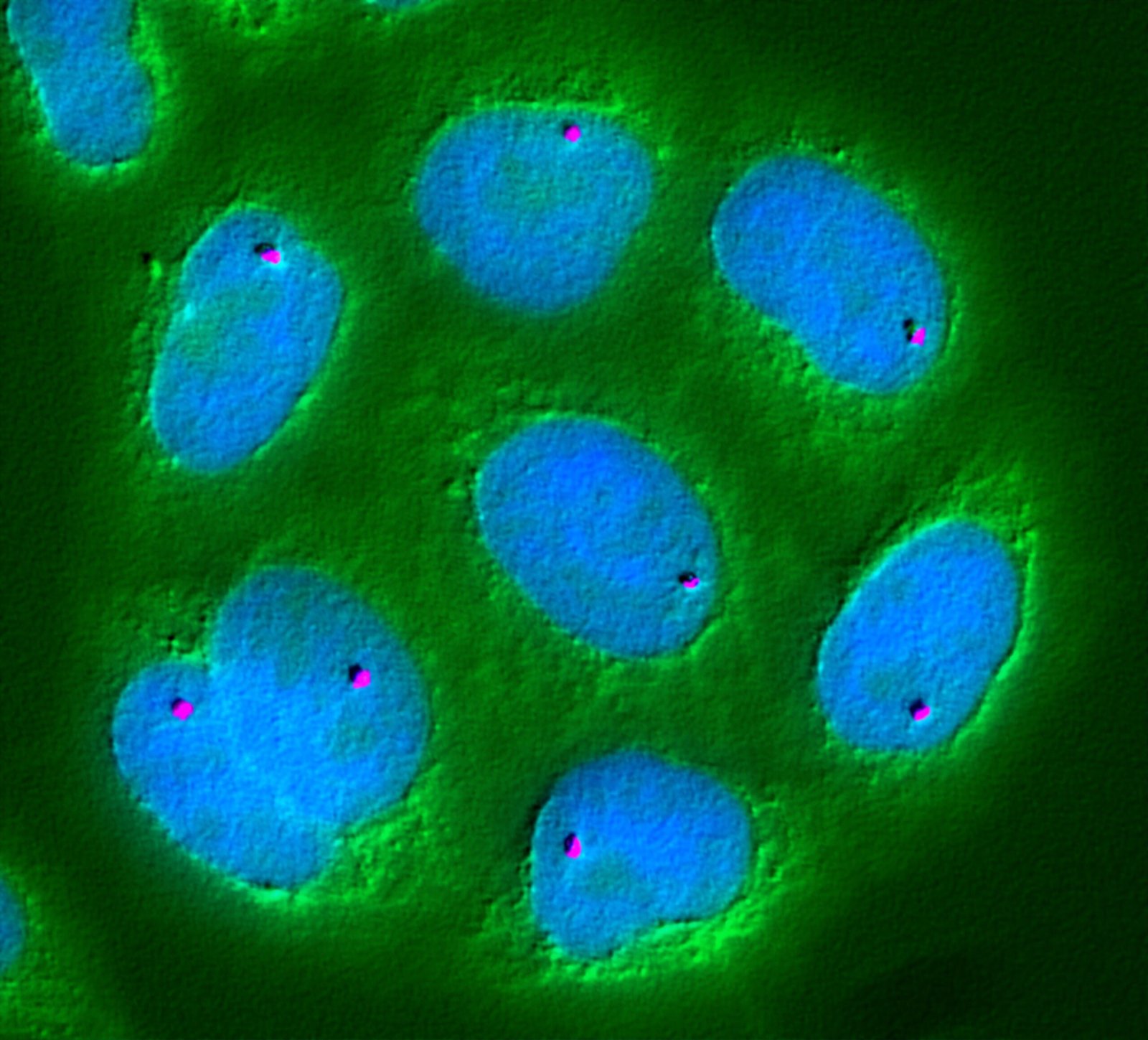If you’re curious about the field of stem cell treatments in Malaysia, it’s important to understand the limitations that come along with it. Stem cells hold great potential for medical advancements, but it’s essential to approach this topic with a realistic lens. In this article, we will explore the various limitations that exist within stem cell treatments in Malaysia, shedding light on the challenges faced and providing insights into the current state of this promising field. So, if you’re ready to delve deeper into the world of stem cell treatments, let’s explore the limitations together.
Overview of Stem Cell Treatments in Malaysia
Malaysia has emerged as a popular destination for stem cell treatments due to its advanced healthcare infrastructure and commitment to medical innovation. Stem cell therapy offers promising potential for various medical conditions, and Malaysia has positioned itself as a hub for these cutting-edge treatments. In this article, we will explore the landscape of stem cell treatments in Malaysia, the limitations associated with these therapies, safety concerns, patient selection and expectations, public awareness and education, legal and regulatory frameworks, cost considerations, the role of medical professionals, alternative and complementary therapies, and future directions and advancements.
Stem Cell Therapy: An Introduction
Stem cell therapy involves the use of stem cells to repair and regenerate damaged tissues and organs in the body. Stem cells are unique cells that have the ability to differentiate into various cell types, making them a valuable tool in medical treatments. In Malaysia, stem cell therapy is being utilized in a wide range of areas, including orthopedics, cardiology, neurology, dermatology, and fertility treatments. The potential of stem cell therapy to revolutionize healthcare has led to a surge in interest among both patients and medical professionals.
Stem Cell Treatment Centers
Malaysia has witnessed the establishment of numerous specialized stem cell treatment centers across the country. These centers are equipped with state-of-the-art infrastructure and staffed by highly trained medical professionals. They provide a wide range of services, including stem cell transplantation, stem cell banking, and therapeutic applications of stem cells. These centers play a vital role in advancing stem cell research and ensuring the availability of safe and effective treatments for patients.

Current Status and Popularity in Malaysia
Stem cell treatments have gained significant popularity in Malaysia, with an increasing number of patients seeking out these innovative therapies. The country has witnessed a rise in medical tourism, with individuals from around the world coming to Malaysia to receive stem cell treatments. This growing popularity can be attributed to the country’s well-established healthcare system, the expertise of its medical professionals, and the affordability of these treatments compared to other countries. However, it is important to understand the limitations and challenges associated with stem cell treatments before making any decisions.
Understanding the Limitations of Stem Cell Treatments
While stem cell therapy holds immense promise, it is crucial to recognize the limitations and challenges that exist in this field. These limitations can impact the efficacy, safety, and accessibility of stem cell treatments. It is essential to have a comprehensive understanding of these limitations to make informed decisions regarding stem cell therapies.
Limited Research and Scientific Evidence
One of the primary limitations of stem cell treatments is the limited scientific evidence supporting their efficacy and safety. While there have been numerous successful case studies and anecdotal evidence, more rigorous clinical trials and research studies are needed to establish the long-term benefits and risks associated with these therapies. The field of stem cell research is still in its infancy, and more research is required to provide conclusive evidence for the use of stem cells in various medical conditions.
Restricted Availability and Accessibility
Another significant limitation is the restricted availability and accessibility of stem cell treatments in Malaysia. While there are specialized treatment centers offering these therapies, accessing them may be challenging for individuals residing in remote areas or with limited financial resources. Moreover, certain types of stem cell treatments may only be available for specific medical conditions, limiting the options for patients seeking alternative treatment options.
Lack of Regulation and Standardization
The lack of comprehensive regulation and standardization is a concern in the field of stem cell treatments. Unlike pharmaceutical drugs, stem cell therapies have not undergone rigorous regulatory processes. This lack of regulation can lead to variations in treatment protocols, quality control issues, and potential risks for patients. It is crucial for the government and regulatory bodies to establish clear guidelines and regulations to ensure the safety and efficacy of stem cell treatments in Malaysia.
Ethical Concerns and Controversies
Stem cell treatments have also sparked ethical concerns and controversies in Malaysia. The use of embryonic stem cells, in particular, raises ethical dilemmas due to the source of these cells. Malaysia has strict laws and regulations regarding the use of embryonic stem cells, but ethical debates still surround this topic. It is important for patients to consider these ethical aspects when considering stem cell therapies and to explore alternative treatment options that align with their values.

Safety and Efficacy Concerns
While stem cell therapy shows great promise, it is essential to address the safety and efficacy concerns associated with these treatments. Patients need to be informed about the potential risks, uncertainties, and limitations to make well-informed decisions about their healthcare.
Possible Side Effects and Risks
As with any medical procedure, stem cell treatments carry potential side effects and risks. These can range from mild, temporary effects such as localized pain or swelling at the injection site to more severe complications such as infection or the formation of abnormal tissues. It is crucial for patients to have a candid discussion with their healthcare providers and understand the possible side effects before undergoing stem cell therapy.
Uncertain Long-term Effects
The long-term effects of stem cell treatments are still not fully understood. While short-term benefits may be apparent, it is important to consider the potential risks and unknowns associated with long-term outcomes. Comprehensive research studies and follow-up evaluations are needed to assess the durability and safety of stem cell therapies over extended periods.
Questionable Quality Control
The lack of standardized regulations and guidelines for stem cell treatments can lead to variations in treatment protocols and quality control issues. Patients need to ensure that they receive treatments from reputable and licensed clinics with a demonstrated commitment to safety and quality. It is crucial to seek out stem cell doctors and medical professionals who have expertise in the field and work within established standards.
Misleading Marketing and Claims
The field of stem cell treatments is not immune to misleading marketing and exaggerated claims. Patients should be vigilant and cautious of clinics or providers that promise unrealistic outcomes or guarantee miraculous results. It is essential to critically evaluate the information provided, seek second opinions, and base decisions on evidence-based practice rather than unsubstantiated claims.
Patient Selection and Expectations
Choosing the right candidates for stem cell treatments is critical to maximize the chances of success and manage patient expectations effectively. Stem cell doctors and medical professionals play a vital role in evaluating patients and ensuring they understand the potential benefits and limitations of these therapies.
Critical Evaluation of Candidates
Stem cell doctors and medical professionals employ a thorough evaluation process to determine if a patient is a suitable candidate for stem cell therapy. Factors such as the patient’s medical history, current health condition, age, and overall health status are taken into consideration. A comprehensive assessment helps identify patients who are most likely to benefit from stem cell treatments and have the realistic expectation of outcomes.
Managing Patient Expectations
Managing patient expectations is essential in any medical treatment, particularly in the field of stem cell therapy where there is still much to learn. It is crucial for stem cell doctors and medical professionals to have open and honest conversations with patients about the potential benefits and limitations of the treatments. Providing realistic outcome projections and addressing any misconceptions or unrealistic expectations will help patients make informed decisions and have a positive treatment experience.
Realistic Outcome Projections
Stem cell treatments offer great potential, but it is important to set realistic outcome projections. Each patient and their condition are unique, and while some individuals may experience significant improvements, others may see more modest changes. Stem cell doctors and medical professionals work closely with patients to set realistic treatment goals and establish a framework for evaluating the efficacy of the therapies over time.

Public Awareness and Education
There is a need to raise public awareness and provide comprehensive education about stem cell treatments in Malaysia. Ensuring that individuals have accurate and reliable information will empower them to make informed decisions about their healthcare.
Insufficient Knowledge among the General Public
Despite the growing popularity of stem cell treatments, there is still insufficient knowledge and awareness among the general public. Many individuals may not fully understand the science behind stem cell therapy, its limitations, and the potential risks involved. Public education campaigns, informative resources, and awareness programs can bridge this knowledge gap and empower individuals to make informed decisions.
Importance of Comprehensive Patient Education
Comprehensive patient education is crucial to ensure that individuals understand the benefits, limitations, risks, and ethical considerations associated with stem cell treatments. Stem cell doctors and medical professionals should take an active role in providing clear and accurate information to patients, answering their questions, and addressing any concerns. Well-informed patients are better equipped to participate actively in their healthcare decisions.
Promoting Transparent Information
Transparency in sharing information is essential to foster trust and confidence among patients. Stem cell doctors, treatment centers, and regulatory bodies should strive to provide transparent and easily accessible information about stem cell treatments. This includes clear explanations of treatment processes, potential risks and benefits, success rates, and any ongoing research or clinical trials. Providing transparent information will enable patients to make well-informed decisions and have realistic expectations.
Legal and Regulatory Landscape
The legal and regulatory framework surrounding stem cell treatments in Malaysia plays a crucial role in ensuring patient safety, promoting ethical practices, and maintaining quality standards.
Malaysia’s Legal Framework for Stem Cell Treatments
Malaysia has established legal frameworks and regulations to govern stem cell treatments. The Ministry of Health regulates and monitors the practice of stem cell therapy in the country. The Guidelines for Stem Cell Research and Therapy issued by the Malaysian Medical Council provide ethical and professional guidance for stem cell doctors and medical professionals. The laws and regulations aim to ensure patient safety and promote responsible practices in the field of stem cell treatments.
Regulatory Bodies and Guidelines
Regulatory bodies such as the National Pharmaceutical Regulatory Agency (NPRA) and the Malaysian Medical Council (MMC) oversee and regulate stem cell treatments in Malaysia. These bodies set guidelines, standards, and protocols to ensure the safety, efficacy, and ethical practice of stem cell therapies. Regular inspections and audits are conducted to monitor compliance and enforce regulations.
Challenges in Enforcement and Compliance
Despite the robust legal and regulatory framework, challenges in enforcement and compliance persist. The rapid growth of the stem cell industry and the emergence of newer treatments and technologies pose challenges for regulatory bodies to stay updated and enforce regulations effectively. Collaborative efforts between regulatory bodies, stem cell doctors, and medical professionals are needed to overcome these challenges and ensure compliance with established guidelines.

Cost Considerations and Insurance Coverage
The cost of stem cell treatments and the lack of insurance coverage present significant barriers for many individuals seeking these therapies. Understanding the cost considerations and exploring potential financing options are important aspects to consider when evaluating stem cell treatments.
High Treatment Costs
Stem cell treatments can be costly due to the advanced technologies, expertise, and resources required for safe and effective therapies. The cost considerations encompass not only the procedure itself but also pre-treatment evaluations, post-treatment follow-up, and any additional supportive care. Patients should be aware of the anticipated costs and explore potential financing options to make informed decisions that align with their financial capabilities.
Variations in Pricing
There can be significant variations in pricing for stem cell treatments in Malaysia. Factors such as the type of treatment, the clinic or treatment center, the expertise of the medical professionals, and other associated services can influence the overall cost. It is essential for patients to obtain detailed and transparent pricing information from different providers, consider the reputation and experience of the clinic, and evaluate the overall value and quality of the treatment.
Lack of Insurance Coverage
One of the challenges associated with stem cell treatments is the lack of insurance coverage. Many insurance companies do not provide coverage for these innovative therapies due to the limited scientific evidence and regulatory frameworks. This lack of coverage can place a financial burden on patients, making it crucial to explore alternative financing options or discuss potential reimbursement possibilities with insurance providers.
Role of Stem Cell Doctors and Medical Professionals
The expertise and experience of stem cell doctors and medical professionals are paramount in ensuring the safety, efficacy, and success of stem cell treatments. Their roles extend beyond the administration of therapies and encompass ongoing research, professional development, collaboration, and networking.
The Importance of Expertise and Experience
The field of stem cell treatments requires specialized skills, knowledge, and experience. Stem cell doctors and medical professionals play a pivotal role in the critical evaluation of patients, determining treatment protocols, and ensuring safe and effective therapies. It is crucial for patients to seek out medical professionals who have expertise in stem cell treatments and are well-versed in the latest advancements and research.
Continuing Research and Professional Development
The field of stem cell treatments is rapidly evolving, with new research and technologies emerging. Stem cell doctors and medical professionals have a responsibility to stay updated with the latest research findings and engage in ongoing professional development. By continuously expanding their knowledge and skills, medical professionals can provide the highest quality of care and incorporate evidence-based practices into their treatments.
Collaboration and Networking
Collaboration and networking among stem cell doctors and medical professionals are essential for advancing the field of stem cell treatments. By sharing knowledge, expertise, and best practices, medical professionals can collectively contribute to improving patient outcomes and addressing challenges. Collaboration also fosters a supportive environment for ongoing research, clinical trials, and the development of standardized treatment protocols.

Alternative and Complementary Therapies
While stem cell treatments offer great potential, they are not always the sole solution for medical conditions. Exploring alternative and complementary therapies in conjunction with stem cell treatments can provide comprehensive and holistic care.
Exploring Other Treatment Options
Stem cell therapy can be complemented by other conventional medical treatments or therapies. For example, physical therapy, medication, or surgical intervention may be necessary in addition to stem cell treatments for optimal outcomes. Stem cell doctors and medical professionals can help patients explore other treatment modalities and create a customized treatment plan that addresses their specific needs.
Combining Stem Cell Therapy with Conventional Medicine
Integrating stem cell therapy with conventional medicine can offer a synergistic approach to patient care. Stem cell doctors and medical professionals can work collaboratively with other healthcare providers to ensure a comprehensive and well-rounded treatment plan. This multidisciplinary approach maximizes the likelihood of positive outcomes and provides patients with a range of therapeutic options.
The Need for Evidence-Based Practice
When considering alternative and complementary therapies, it is crucial to prioritize evidence-based practices. Stem cell doctors and medical professionals should base their treatment decisions on scientific research, clinical data, and established guidelines. By embracing evidence-based practices, patients can be confident in the effectiveness and safety of the treatments they receive.
Future Directions and Advancements
The field of stem cell treatments in Malaysia is poised for future developments and advancements. Ongoing research, collaborative efforts, and international cooperation will drive progress and improve patient outcomes.
Emerging Technologies and Research Areas
As scientific understanding of stem cells expands, new technologies and research areas are emerging. Scientists and researchers are exploring innovative techniques such as induced pluripotent stem cells (iPSCs), gene therapy, and tissue engineering. These advancements have the potential to revolutionize the field of regenerative medicine and open up new avenues for treatment and healing.
Collaborative Efforts and International Cooperation
Collaboration and international cooperation are crucial for advancing stem cell research and treatments. Malaysian researchers and medical professionals actively engage in collaborative efforts with international partners to share knowledge, expertise, and resources. These collaborative endeavors pave the way for breakthrough discoveries, standardized treatment protocols, and the development of global best practices.
Engaging in Clinical Trials and Study Programs
Engaging in clinical trials and study programs is a significant step towards advancing stem cell treatments. Malaysia actively participates in clinical trials and research studies to evaluate the safety and efficacy of stem cell therapies. By participating in these initiatives, patients have access to cutting-edge treatments and contribute to the scientific understanding of stem cell therapies.
In conclusion, stem cell treatments offer immense potential for various medical conditions, providing hope for many patients in Malaysia and around the world. However, it is important to recognize and understand the limitations, safety concerns, patient selection and expectations, public awareness and education, legal and regulatory landscape, cost considerations, the role of medical professionals, alternative therapies, and future directions associated with stem cell treatments. By addressing these factors comprehensively, patients can make informed decisions and healthcare professionals can strive for the highest standards of care in the field of stem cell treatments.




